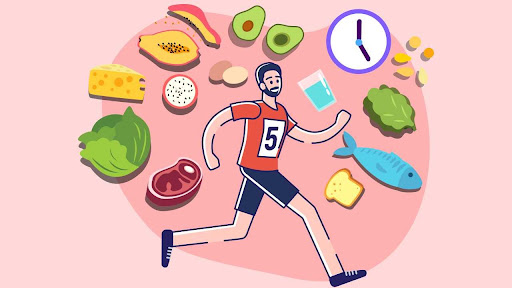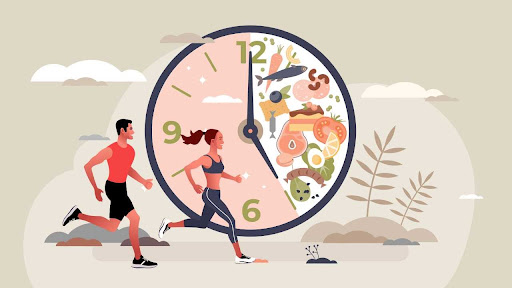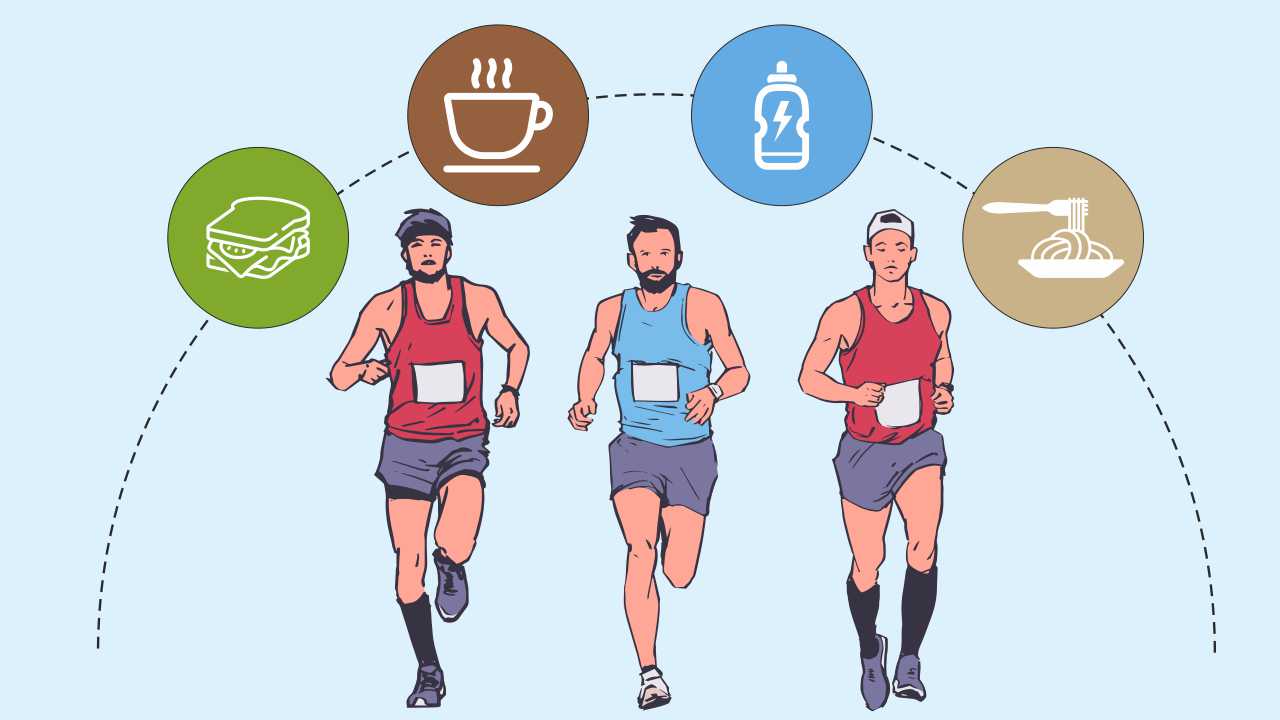
Essential Guide to Fuelling for Long-distance Runs

A long-distance run means different things to different people. Perhaps you recently ran a 5K or 10K and have decided to challenge yourself by signing up for a half-marathon (21km; 13.1 miles). Maybe you’re making the jump from a half-marathon to the full 42km (26.2 miles). Or, perhaps you’re one of those rare athletes who compete in ultramarathons, which can cover distances of up to 161km (100 miles). If you come in the latter category, you may be curious to know how to fuel your body for running.
No matter the distance you’re running, you need to fuel and hydrate the body appropriately to optimize performance — whatever that means for you. Also, inadequate hydration or nutrition can put you at a greater risk for injury.
Here, let us focus on proper fueling for those interested in completing their first half-marathon or marathon. What does it involve?
Hydration
Staying hydrated during a long run is absolutely vital if you are looking for ideas on how to fuel your body for running. Hydration is not only essential for your performance, but also for your health and safety. The goal of your hydration plan should be to reduce significant fluid loss from sweat while also preventing fatigue, muscle cramping and dehydration or overhydration.
Figuring out how much fluid you actually need takes practice. The best way to assess your fluid needs is to weigh yourself before and after training runs. If you gain weight, you have drunk too much fluid.
While the risk of overhydration may seem far-fetched or even counterintuitive, recreational runners working at lower intensities for longer periods of time can easily drink more than they need and may not sweat as much as competitive runners
This leaves them at risk for hyponatremia, a dangerous condition in which the consumption of fluids exceeds sweat, urine and respiratory loss and leads to low sodium levels in the blood. This leads to a situation in which there is not enough sodium to maintain water balance in and around the cells. This can cause nausea, vomiting, headache, confusion, and fatigue.
Sweat rates change depending on exercise intensity, fitness level, run duration, altitude, and environmental conditions such as humidity and heat. That said, cognitive function, thermoregulation and aerobic exercise performance become compromised when you lose more than 2% of your body weight. If you are losing this much weight, you probably didn’t drink enough fluids to balance water losses during a long run.
Some runners find it difficult to drink a lot during an event, but if you’re losing substantial weight during your runs, you should practice drinking more frequently, even if you don’t feel thirsty.
The good news is that the body is very good at managing fluctuations in hydration levels — within reason — so both dehydration and hyponatremia are rare and easily prevented with some forethought and practice.
It’s also essential to start a run well hydrated, by drinking 5mL to 7mL of fluid per kilogram of body weight two hours before your start time. For a 69.8kg (154lb) individual, this would be about 355mL to 503mL of fluid. You will know you’re properly hydrated if your urine is pale yellow.
A note about sports drinks
When it comes to fueling for a long run, some athletes choose to drink sports drinks in order to consume carbohydrates and electrolytes as part of their fluid intake. If you are participating in an event or training session lasting longer than two hours, or you are exercising in conditions that cause heavy sweating, it is recommended that you consume a beverage containing 0.5g/L to 0.7g/L of sodium and 0.8g/L to 2.0g/L of potassium to replace sweat losses.
The need for electrolyte replacement is highly variable. Recreational runners working a low intensity in a cooler environment with moderate sweat levels for less than two hours may not need additional electrolytes. If you are a competitive runner or a heavy sweater, or if you will be running in hot, humid conditions, consider sports drinks or snacks like gummies, gels, and GU that include sodium and potassium.
Also read: What Role Do Electrolytes Play During And After a Long Run
Fueling before a run
The nutrition plan for long-distance runners who are planning to race for a duration of 90 minutes or more should begin the night before the event by eating a meal that contains healthy carbs such as quinoa, oats, bananas, and sweet potatoes.
Then, the morning of the event, eat a small breakfast (200 to 300 calories) about one or two hours before the start of the run. This meal should contain primarily easily digestible carbohydrates (white rice, bananas and potatoes), along with some protein (eggs, chicken or salmon), as these are some of the best foods for running stamina.
Focus on eating low-fat and low-fiber foods that are less likely to upset your stomach during the race. The goal is to get a boost of glucose from the carbohydrates and consume adequate calories to fuel your efforts without causing any gastrointestinal distress.
Maintaining energy during the run
During the run, in addition to replacing the water and electrolytes lost in your sweat, you’ll want to keep your energy up by eating some quick-digesting foods that provide essential nutrients. Many athletes opt for sport supplement snacks like the gummies and gels mentioned above. Others choose to eat “real food” in combinations that provide simple sugars, sodium, potassium, and other nutrients.
Whatever you choose to consume during your run, the key is to practice multiple times before the event so that you can be confident that your body will tolerate it
Also, be sure to fuel your body before you feel it starting to “crash”. This crash often involves feeling as though you have run out of energy, your muscles are not working, and your legs feel heavy and shaky. “Fuel early and often” is a phrase used by many registered dietitians who work with athletes. The idea is to keep your energy levels up from start to finish, as opposed to responding to dips in energy throughout the run.
Recovering after a run
After a long run, you may be tempted to eat everything in sight. After all, you just burnt a lot of calories. There are, however, some guidelines to follow in order to optimize muscle repair and recovery. For the first four hours after exercise, consume 1g to 1.2g of carbohydrates per kilogram of body weight per hour, and then resume normal eating. Also, eat approximately 0.3g of protein per kilogram of body weight within about 30 minutes of completing the run, and then again every three to five hours over multiple meals for the next 24 hours. This is an important time to rebuild and repair the muscles that were just so heavily taxed.
Also read: How Does Nutrition Help in Exercise Recovery?
Then, eat a meal every two hours for the next four to six hours that includes healthy carbohydrates, lean protein like fish, plain yogurt, skinless white-meat chicken, and beans, peas and lentils, healthy fats such as avocados, eggs and fatty fish like trout, salmon, and mackerel, along with a variety of fruits and vegetables.
Finally, don’t forget to rehydrate. You must be vigilant about replacing fluid losses after a long run. It can take even a full day for you to rehydrate.
Consume water to restore hydration, carbohydrates to replenish glycogen stores in the muscles, and electrolytes to speed rehydration. Typically, unless you have another event or workout scheduled in the next 12 hours after your run, rehydration through the usual meals, snacks and water intake will be adequate. If rapid recovery is needed, you can determine fluid needs by subtracting your post-even weight from your pre-event weight, and drinking 1.5L per kilogram of body weight lost.
References
1. American College of Sports Medicine. ACSM’s Guidelines for Exercise Testing and Prescription (11th ed.). Philadelphia: Wolters Kluwer, 2022.
2. American Council on Exercise. The Exercise Professional’s Guide to Personal Training. San Diego: American Council on Exercise, 2020.
3. Hew-Butler, T, Loi, V, Pani, A., et al. Exercise-associated hyponatremia: 2017 update. Frontiers in Medicine 2017, 4: 21.
4. Kerksick, CM, Wilborn, CD, Roberts, MD, et al. ISSN exercise & sport nutrition review update: Research & recommendations. Journal of the International Society of Sports Nutrition 2018, 15: 38.
5. Rodriguez, NR, Di Marco, NM, Langley, S. American College of Sports Medicine position stand: Nutrition and athletic performance. Medicine & Science in Sports & Exercise 2009, 41: 709–731.
6. van Rosendal, SP, Osborne, MA, Fassett, RG, et al. Guidelines for glycerol use in hyperhydration and rehydration associated with exercise. Sports Medicine 2010, 40, 2: 113–129.














